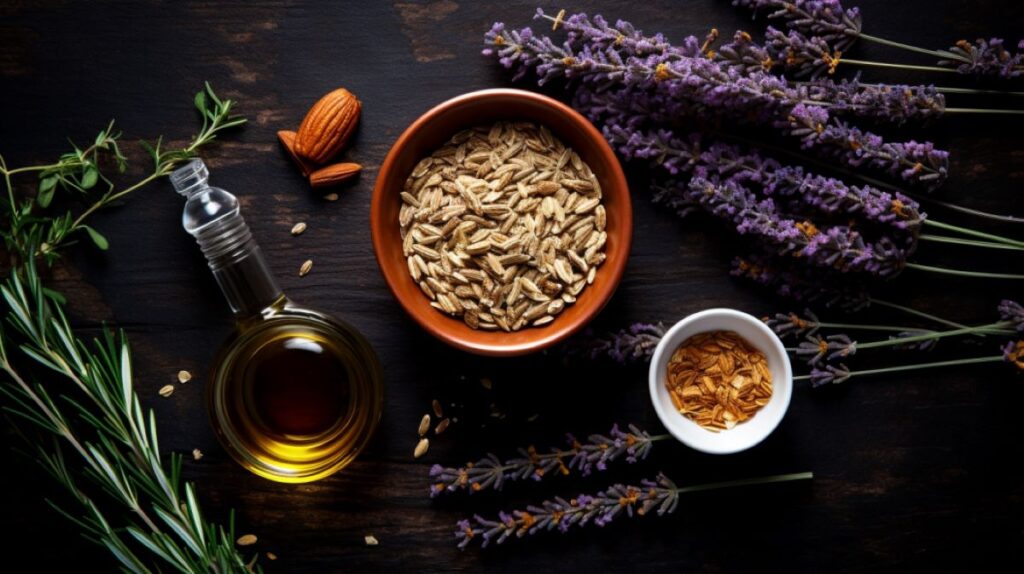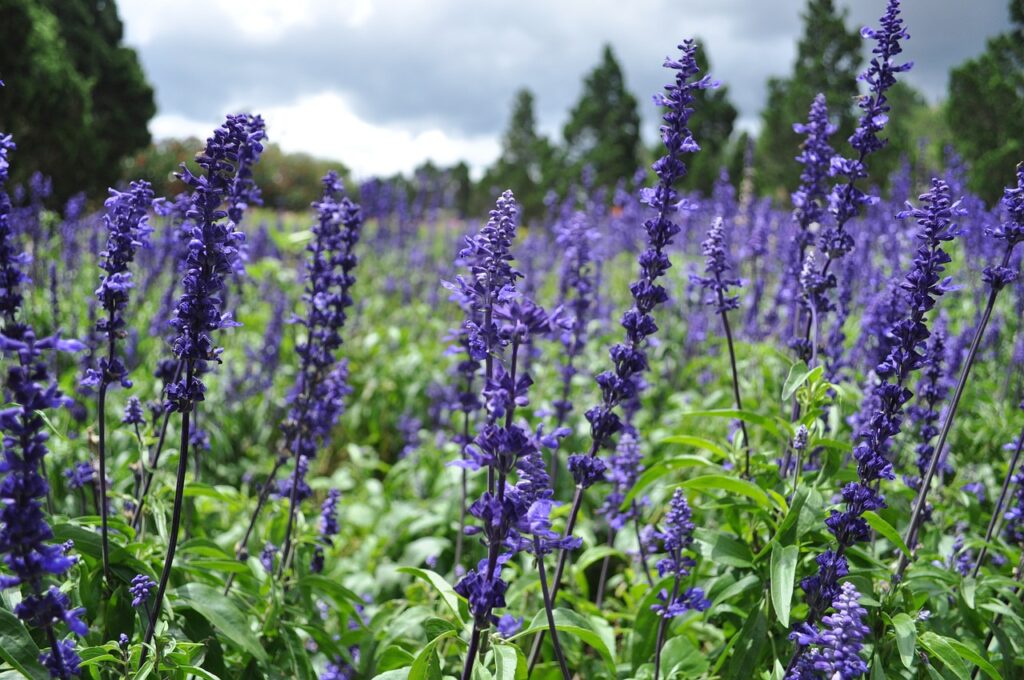Coconut Oil Bath Bomb Recipe: DIY Guide, 4 Extra Recipes
Coconut oil has become a popular ingredient in many natural beauty products. Coconut oil bath bombs are easy to make and super fun to use, especially for children. They’re also a great way to pamper yourself and add a touch of luxury and aromatherapy to your bathtime routine.
With just a few simple ingredients, you can create a luxurious bath experience that is both moisturizing and relaxing. Not only are these bath bombs easy to make, but they are also customizable to your preferences. You can add different scents, colors, and even dried flowers or herbs to make your bath bombs unique.
In this article, you’l learn about the common ingredients you can customize your recipes with, learn how to make your own coconut oil bath bombs with a basic recipe, plus get some creative inspiration from three additional recipes.
Bath Bombs with Coconut Oil: Why They’re Great
A coconut oil bath bomb is a type of bath bomb that is made with coconut oil as one of its main ingredients. Bath bombs are small, hard-packed balls or shapes that are designed to dissolve in bathwater, releasing a variety of ingredients that can help moisturize, soothe, and relax the skin.
Coconut oil (pure unrefined cold-pressed is best) is a natural oil extracted from mature coconuts. It is known for its moisturizing and skin-soothing properties and is often used in various skincare products. When used in a bath bomb, coconut oil can help to moisturize and soften the skin, leaving it feeling smooth and refreshed.
We always suggest a gradual transition to natural skincare alternatives, and using all-natural bath bombs is yet another way to make the transition to natural skincare. Like most DIYs, they can also be scented with various essential oils, providing additional relaxation benefits.
Additional Benefits of Coconut Oil in Bath Bombs
Coconut oil is the perfect ingredient for bath bombs, and there are multiple reasons for that. It has numerous benefits for the skin. Let’s consider a few.
- Moisturizing: Coconut oil is a natural moisturizer that can help hydrate and soften the skin. It contains fatty acids that can penetrate the skin and provide long-lasting moisture.
- Skin-soothing: Coconut oil has anti-inflammatory properties that can help soothe irritated skin. It can also help reduce redness and swelling. Add a bit of colloidal oatmeal, and you have a powerful combination, especially for sensitive skin.
- Antioxidant: Coconut oil contains antioxidants that can help protect the skin from damage caused by free radicals. Free radicals can cause premature aging and damage to the skin.
- Non-toxic: Coconut oil is a non-toxic ingredient that is safe for most people to use. It is gentle on the skin and does not contain any harmful chemicals.
Using coconut oil in bath bombs can be a great way to nourish and pamper the skin. It is a natural and effective ingredient that can benefit a wide variety of skin types.
Essential Ingredients for Coconut Oil Bath Bombs
To make a high-quality coconut oil bath bomb, several essential ingredients are required. These ingredients include coconut oil, baking soda, citric acid, Epsom salt, essential oils, water, and one of many other optional ingredients.
Coconut oil is a key ingredient, primarily as a moisturizing agent. As discussed in the previous section, it will help balance the other ingredients and soothe your skin.
Baking soda is another essential ingredient in bath bombs. It helps to soften the skin and neutralize any acidic elements in the bathwater. It also helps to balance the skin’s pH levels and chemically reacts with a dry acid, like citric acid (below), to cause fizzing in the water.
Citric acid is a key ingredient in bath bombs as it helps to create the fizzing effect. It reacts with the baking soda to create carbon dioxide gas, which causes the bath bomb to fizz and dissolve in the water.
Epsom salt is another important ingredient in bath bombs. It helps to relax muscle aches and can soothe dry, itchy patches of skin.
Colloidal Oatmeal: Colloidal oatmeal has been used for decades for those with sensitive skin due to its emollient and anti-inflammatory properties. Get a few oats, grind them up in a blender until you have oat powder, and try adding this to your bath bomb recipes. You can make soap bars for sensitive skin with colloidal oatmeal as well.
Manuka Honey: Any honey will do, but manuka honey is especially helpful in soothing the skin. It’s anti-inflammatory, too.
Essential oils are used to add fragrance and therapeutic benefits to bath bombs. There are numerous skin benefits that vary wildly depending on the essential oil being used. Popular essential oils for bath bombs include lavender, peppermint, eucalyptus, and chamomile.
Jasmine essential oil and other floral oils can also work quite well, especially when combined with a drop or two of citrus oil.
Water is also an essential ingredient in bath bombs. It is used to activate the citric acid and baking soda, which creates the fizzing effect. It is important to use the right amount of water to ensure that the bath bomb has the right consistency and does not fall apart.
Other optional ingredients that can be added to bath bombs include cornstarch, almond oil, cocoa butter, coconut milk powder, fractionated coconut oil, shea butter, carrier oils, and vegetable-based food coloring. These ingredients can help to add texture, color, and additional moisturizing properties to the bath bomb.
High-quality, natural ingredients are essential in making a great coconut oil bath bomb. By following the right recipe and using the right ingredients, anyone can create a luxurious and relaxing bath experience.
Choosing the Right Essential Oils
When it comes to making coconut oil bath bombs, choosing the right essential oils is an important consideration, too. Essential oils are highly concentrated plant extracts that are used in aromatherapy to promote relaxation and improve mood.
Here are some tips for selecting the right essential oils for your coconut oil bath bomb recipe.
Consider the Benefits of Aromatherapy
Different essential oils have different properties, benefits, and uses. For example, lavender essential oil is known for its calming properties, while citrus oils are energizing and uplifting. When selecting essential oils for your coconut oil bath bombs, consider the benefits of aromatherapy and choose oils that will help you achieve your desired mood.
Experiment with Different Combinations
Mixing different essential oils can create unique and complex scents. Experiment with different combinations of essential oils to find the perfect blend for your coconut oil bath bombs. Some popular combinations include lavender and peppermint, grapefruit and bergamot, and lemon and eucalyptus. Oh, and don’t forget sandalwood. It’s an incredible scent.
Use Calming Bath Salts
Adding calming bath salts to your coconut oil bath bombs can enhance the relaxation benefits of aromatherapy. Bath salts are made from minerals such as magnesium and potassium, which can help soothe sore muscles and ease tension. Look for bath salts that contain lavender or chamomile essential oils for an extra calming effect.
4 Easy Bath Bomb Recipes and Step-by-Step Instructions
Making your own bath bombs can be a fun and rewarding experience. With this simple recipe, you can create your own coconut oil bath bombs quickly. Here is a step-by-step guide to making your own coconut oil bath bombs.
1.) Basic Coconut Oil Bath Bomb Recipe
Ingredients:
- 1 cup baking soda
- ½ cup citric acid
- ½ cup cornstarch
- ½ cup Epsom salt
- 2 tablespoons coconut oil
- 1 teaspoon water
- 10 drops of essential oil (optional)
- Bath bomb mold
Step-by-Step Instructions:
- Mix the baking soda, citric acid, cornstarch, and Epsom salt in a large bowl until well combined.
- In a separate bowl, melt the coconut oil in a double boiler or microwave for 30 seconds until it is completely melted.
- Add the melted coconut oil and essential oils (if you’re using them) to the dry mixture and stir until it is crumbly.
- Add a teaspoon of water to the mixture and stir until it is well combined. The mixture should hold together when you squeeze it in your hand. The amount of water you need may vary slightly but use just enough to hold it together without it being too wet.
- Fill each half of the bath bomb mold with the mixture, pressing down firmly. Make sure to overfill each half of the mold. No worries if you aren’t using molds; you could use small measuring spoons, muffin tins, cookie cutters, or even shape them with your hands.
- If using a mold, press the two halves of the mold together and hold for a few seconds to ensure they are tightly packed.
- Carefully remove the bath bomb from the mold and place it on a flat surface to dry for at least 24 hours.
- Once the bath bomb is dry, store it in a glass jar or airtight container until ready to use. Separate with wax paper as needed.
Using a silicone mold can also work well for this recipe. With this easy-to-follow guide, you can create your own DIY coconut oil bath bombs quickly. Enjoy a relaxing and soothing bath with your homemade bath bombs.
2.) Lavender Coconut Bath Bombs
- 1 cup baking soda
- 1/2 cup citric acid
- 1/4 cup Epsom salts
- 2 tbsp coconut oil, melted
- 1 tbsp dried lavender buds
- 10 drops lavender essential oil
- Food coloring (optional)
Combine dry ingredients in a bowl. Add coconut oil, lavender buds, and essential oil. Mix well. Add food coloring if desired, form it with your hands, or use molds, and let it dry for 24 hours.
3.) Coconut Milk Bath Fizzies
- 3/4 cup baking soda
- 1/2 cup corn starch
- 1/4 cup coconut milk powder
- 2 tbsp coconut oil, melted
- 1 tbsp honey (manuka preferably)
- 1 tsp vanilla extract
- Coconut fragrance oil
Mix dry ingredients in a bowl. Add coconut oil, honey, vanilla, and fragrance. Mix well and scoop into molds or shape with your hands. Once shaped well, allow to dry for 24 hours.
4.) Coconut Lime Bath Bombs
- 1 cup citric acid
- 2 cups baking soda
- 1/4 cup Epsom salts
- 3 tbsp coconut oil, melted
- Zest of 2 limes
- 10 drops lime essential oil
- Green food coloring
Combine the dry ingredients in a bowl. Add melted coconut oil, lime zest, and essential oil. Mix in a few drops of natural green food coloring if desired. Pack firmly into molds and allow to set 1 hour before removing; allow to dry for 24 hours.
5.) Coconut Rose Bath Bombs
- 1 cup baking soda
- 1/2 cup citric acid
- 1/4 cup cornstarch
- 3 tbsp coconut oil, melted
- 1 tbsp dried rose petals
- 5 drops rose essential oil
- Red food coloring (optional)
Combine the baking soda, citric acid, and cornstarch in a bowl. Add the melted coconut oil, rose petals, and rose essential oil. Mix well. Add a few drops of red food coloring if desired. Firmly pack the mixture into molds and allow it to set for 1-2 hours before removing it from the molds. Allow to dry for 24 hours.
Tips for Perfect Bath Bombs
Creating the perfect bath bomb can be challenging, but with these tips, it can be a breeze. Here are some tips to help you create the perfect bath bomb:
Use the Right Molds
Silicone molds are the most popular choice because they are easy to use and clean. However, you can also use metal or plastic molds. Just make sure that whatever you’re using is sturdy. Again, you can use measuring spoons, small plastic containers, leftover plastic easter eggs, or your hands to get the desired shape.
Use Witch Hazel
Witch hazel is an excellent ingredient to add to your bath bomb recipe. It helps to bind the ingredients together and makes the mixture easier to mold. It also has astringent properties that help to tighten and tone the skin. Since many people don’t have witch hazel, we didn’t include it in our recipes. But it’s definitely worth trying.
Add Coloring
Adding coloring to your bath bomb mixture can create a beautiful effect, especially if you add it towards the end for a swirled appearance. Alternatively, natural colorants such as beetroot powder or spirulina powder can be used. Keep in mind that some natural colorings may stain your tub.
Create Rainbow Bath Bombs, Variations
To create a rainbow effect, divide the mixture into separate bowls and add different colors to each one. Then, layer the mixture in the mold, starting with the darkest color and ending with the lightest.
With these tips, you can create the perfect bath bomb every time. Remember to experiment with different ingredients and molds to find the perfect combination for you.
Special Considerations for Sensitive Skin
For those with sensitive skin, using bath bombs can be a bit tricky, but it just depends on the ingredients you’re using. Coconut oil is generally considered safe for most skin types, but it’s always a good idea to test a small area first to ensure you don’t have a reaction.
If you have sensitive skin, add some extra oil to your recipe and alternate ingredients until you find the best combination for your skin. Avoid scents at first.
Once you’ve settled on your basic ingredients, add a scent or two with essential oils, but just a few drops. Another option is to use a moisturizing bath truffle instead of a bath bomb. These truffles are typically made with ingredients like cocoa butter and shea butter, which can be gentler on sensitive skin.
To avoid irritation, it’s important to rinse off thoroughly after using a bath bomb. You can help remove these dead skin cells and prevent breakouts by rinsing thoroughly. Also, use a natural moisturizer to lock in your skin’s moisture.
Frequently Asked Questions
What is the best oil to use in bath bombs?
It depends. The best oil to use in bath bombs is the one that’s the best suited for your skin type. Carrier oils, such as coconut oil, almond oil, olive oil, shea butter, cocoa butter, or jojoba oil, help moisturize the skin and provide a smooth texture to the bath bomb.
To answer your question, make bath bomb variations that utilize a few of those oils and see which ones you like the best.
Regarding essential oils, it depends on the fragrances and skin benefits you’d like in your final product. We like combining floral essential oils (like Jasmine or Rose) with citrus or sandalwood essential oils. We also like myrrh, Spikenard, and frankincense, which are great for a warm, spicy blend in winter.
Many essential oils can help nourish the skin (see below).
How do you make a moisturizing bath bomb?
To make a moisturizing bath bomb, use a combination of carrier oils listed in the answer above. Don’t forget to use a few skin-nourishing essential oils as well, such as palmarosa, myrrh, lavender, etc.
What are some natural bath bomb recipes?
Some natural bath bomb recipes include using natural ingredients like baking soda, citric acid, Epsom salt, and essential oils.
You can also add natural colorants like beetroot powder or turmeric powder to create colorful bath bombs. See the recipes earlier in this article for more information.
Are there any bath bomb recipes for sensitive skin?
Yes, there are bath bomb recipes that are specifically designed for sensitive skin. These recipes typically use gentle ingredients like colloidal oatmeal, chamomile, or calendula to soothe and moisturize the skin.
Start with the most basic ingredients first, then add others individually. If you notice irritation from a new ingredient, stick to basic ingredients. Also, be sure to moisturize well after bathing to seal in your skin’s moisture.


